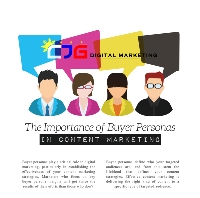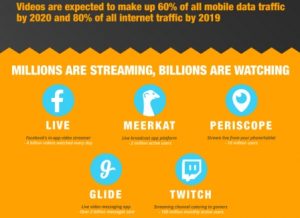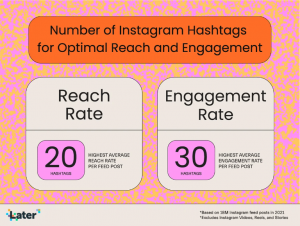When Billy Joel sang that, “It’s a matter of trust,” he wasn’t talking about marketing. Nevertheless, marketers can definitely learn a thing or two from The Piano Man, especially when it comes to the importance of building relationships with prospective customers.

Customer testimonials are one of the most powerful trust signals you can use on your website and in your marketing campaigns. Persuasive testimonials from satisfied customers can sway even the most hesitant prospect, making them a potent weapon in your marketing arsenal.
In today’s post, I’ll explain:
- Why trust is so crucial to marketers
- Why your business should be using customer testimonials
- The differences between each type of customer testimonial, and when to use each
- How to get stellar customer testimonials for your site
The Importance of Trust in Marketing
These days, consumers’ patience for sleazy marketing tactics is at an all-time low. Independent review websites such as Yelp, customer feedback on e-commerce sites like Amazon, and the ubiquity of social media have forced businesses to rethink how they gain (and keep) customers’ trust.
As such, it’s never been more important for marketers to be genuine and transparent about their products and services, and to focus on the customer above all else.

When it comes to establishing and maintaining relationships with customers, tiny mom-and-pop businesses are on a level playing field with huge corporations with near-limitless marketing budgets. Why? Because trust cannot be bought; it must be earned.
However, building and maintaining customer trust is about far more than increasing sales. A company’s trustworthiness is a fundamental part of its identity. Even today, when reputation management firms craft carefully constructed public relations campaigns for the most disreputable companies, trust is one of the few commodities that is not for sale.
Seeing Is Believing
Last year, customer experience research firm Temkin Group conducted an extensive survey to gauge which were the most and least trusted companies in America.

Image via Temkin Group
Financial services giant USAA took the top honors in the top three categories – Banks, Insurance Carriers, and Credit Cards, with consumer trust ratings of between 80-85%. Other brands that scored well in terms of consumer trust included Lexus, Trader Joe’s and Costco.
However, the bottom of the pile was far more telling. Comcast, one of the most hated companies in the United States, managed to rank among the least-trusted brands in not one but two categories – TV Service and Internet Service, both of which are its core product offerings. Other brands that failed to earn consumers’ trust included Time Warner Cable, Charter Communications, HSBC, and US Airways.

Is it just coincidence that Comcast happens to be one of the least trustworthy companies in the country and one of the nation’s most despised brands?
No matter how much money it spends on marketing, the fact remains that the vast majority of the American public doesn’t trust Comcast – and that’s putting it mildly. This is a PR problem that no sum of money can solve, and serves as a valuable lesson in the importance of trust and its influence on a brand’s image.
Social Signals as a Selling Tool
Despite the fact that consumers are more savvy than ever before, the Internet is still rife with poor-quality products, con artists, and blatant scams using falsified customer testimonials to peddle their wares. You know the type – “glowing” testimonials like this:

Results may vary.
You might think that the fact that these testimonials are obviously bogus means that all customer testimonials are equally useless. However, this is most definitely not the case, because more and more companies are turning to social validation to add credibility to their trust signals.
Social trust signals are incredibly powerful for two reasons. Firstly, the authenticity that social proof offers is almost invaluable to marketers. Simply using real responses from real people in your marketing materials can go a long way toward not just persuading prospective customers of your product or service’s value, but demonstrates that your company has actual, flesh-and-blood fans that are ready and willing to say great things about you – not falsified testimonials from imaginary customers.

The second reason why social proof is such a powerful marketing tool is because social media is where a vast amount of people’s interaction with a brand takes place.
Today’s consumers live and breathe social media, making the inclusion of social proof a logical choice for brands hoping to attract followers (and ultimately, brand evangelists) from an environment with which they’re already comfortable and intimately familiar. The fact that brands can also easily demonstrate that they’re aware of and actively responding to fans’ social interactions at the same time is a major bonus, and further contributes to positive perceptions of the brand.
Types of Customer Testimonials
Although customer testimonials are often very similar in content, there are several distinct types of testimonial, each of which offers brands something different. Let’s take a look at each of these types in more detail, as well as the benefits of using each.
The Social Media Interaction
The first type of customer testimonial is the social media interaction.
Many brands use this as their primary format of customer testimonial because of its inherently organic, natural “feel.” Captured from social media accounts “in the wild,” these testimonials are often reproduced as-is, with no fancy formatting applied and no editing of the message. Oftentimes, they’re pulled directly from Facebook or Twitter.

The example above is a social media interaction that was pulled from the Facebook News Feed of fashion retailer Verrier Handcrafted. The Facebook comment references a specific experience the customer had with a specific product, and highlights just how happy she was with her purchase.
It’s short, gets right to the point, and has nothing but praise for the quality of the garment. Notice how the customer freely offers to provide Verrier Handcrafted with a more detailed customer testimonial without any prompting from the retailer.
This example goes to show how effective focusing on quality and customer service can be, and the power that a simple comment on Facebook can have.
The ‘Industry Insider’ Testimonial
Another common form of customer testimonial is the “industry insider” testimonial. Similar to a testimonial from a typical customer, these testimonials feature the opinions of a respected individual or thought leader within a given industry.

This type of testimonial is ideal for B2B companies, because it not only leverages the power of a typical testimonial, but also capitalizes on the knowledge and expertise of the individual featured. This is also an excellent opportunity to highlight the brands that are among your satisfied customers, as HubSpot does in this example:

Aside from being the CEO of Groove, a well-known and widely used helpdesk software system, Ethan Griffin is also widely known in the business world, making him a prime candidate for this type of customer testimonial.
Also, note that HubSpot has very cleverly added “Former Marketo client” to Griffin’s testimonial. Not only does he have great things to say about HubSpot, but it’s also made very obvious that Griffin abandoned Marketo in favor of HubSpot.
The ‘Satisfied Customer’ Testimonial
The structure and format of the “satisfied customer” testimonial will be instantly familiar to most people – a quote from the customer explaining why the product or service is so great, an image of the person, and their name.

The examples above, from helpdesk software provider Help Scout, don’t include job titles, but that doesn’t matter – these testimonials are supposed to be digested quickly, and focus on the praise, not the person’s position.
If you’re planning to use this type of testimonial in your marketing materials, it’s essential to include an image of the customer being quoted. Without a picture, it’s virtually impossible for the prospect to form a connection with the individual, which dilutes any impact the testimonial itself might have had.
There are other ways you can incorporate trust signals into satisfied customer testimonials. Email marketing tool provider AWeber states how long each individual featured in its testimonials has been a customer, providing the prospect with an at-a-glance view of how long AWeber’s user lifecycle can be:

The Video Testimonial
More and more companies are using video to highlight their customer testimonials. Yes, the overhead involved in actually producing videos is higher, but the results can be well worth the effort.
One of the major benefits of video testimonials is that they deviate pretty radically from typical testimonials, offering brands much more creative license to show how happy their customers are. Video testimonials go far beyond the usual quotes to offer the prospect a glimpse at how users are actually interacting with the product. They also offer an incredible opportunity for prospects to connect with the satisfied customer on a completely different level.
Our friends at Unbounce have been using video testimonials for some time. This one was featured on one of Unbounce’s landing pages:
This particular video uses techniques more commonly found in a traditional case study (and it’s actually labeled as a case study in Unbounce’s Vimeo channel), but it’s essentially still a video of a satisfied customer explaining why Unbounce is so awesome.
It’s short enough to get to the point, but long enough to make a compelling case for using Unbounce. It’s also significantly more engaging that any static content could ever hope to be.
How to Use Customer Testimonials
Before you throw any old quotes onto your homepage, think about what you want the inclusion of testimonials to actually accomplish.
Put the Customer First
Before you do anything, approach your website from the perspective of a would-be customer.
Think about what brought them to your site in the first place; a PPC ad, a social promotion, an organic search result. Although each prospects’ journey will be different, the desired result is the same – they want you to make their lives better by solving a problem.

Image via Less Accounting
Considering the intent of prospective customers is crucial, because once you understand why people are coming to your site, you can start thinking about how customer testimonials can be used as a trust signal.
Are you operating in a crowded market with numerous competing products? A well-positioned testimonial can emphasize your commitment to customer service (or whatever your unique selling proposition happens to be). Does your product or service carry greater perceived risk? A testimonial can offset would-be customers’ hesitation and preemptively address common concerns.
Highlight Your Perfect Customers
Just as marketers are always pursuing the “perfect” prospect, your testimonials should highlight your perfect customers.

Image via Help Scout
Think of customer testimonials as an opportunity to show prospects who your ideal customer is. If your product or service is aimed at women who run small businesses with less than 10 employees, feature someone who matches these criteria in your customer testimonials.
This technique also has the potential for prospects to identify with your existing customers more strongly; if they see someone just like them happily using your product, they’ll be much more likely to envision themselves being happy using it because we unconsciously identify with people who are like us. An added bonus of using this technique is that it subtly tells your prospects that you’re familiar with your target market and understand the needs of people just like them.
Emphasize Your USP
Customer testimonials can be very powerful, but it isn’t enough to simply have a few of your most loyal fans gush about how happy they are – you need to include reasons why prospects should choose your business over another. The best way to do this is incorporate your USP into your customer testimonials.

Ideally, this is something that your existing customers will do on their own, without being prompted. After all, there is probably at least one reason your customers have chosen to do business with you rather than a competitor. Use this as the basis for your customer testimonials.
Whatever sets you apart from the competition – whether it’s your commitment to amazing customer service or a genuinely innovative feature that no other company can match – make it obvious in the testimonials you choose to feature.
Focus on a Different Selling Point in Each Testimonial
Most businesses do at least one thing really well. Zappos, for instance, is famed for its commitment to providing exceptional customer service. However, some companies excel at not just one, but several things. If your brand can boast several reasons why your customers are so happy, focus on each of these selling points in a different testimonial.
This approach does more than allow you to convey several aspects of your product or service to prospective customers. It avoids repetition, which can still be perceived negatively even when focusing on positive qualities, and adds dimension to your brand. After all, how many people do you need to explain that your customer service is awesome?

Focusing on numerous selling points across several testimonials also lets you preemptively address more than one potential objection your prospects might have. This can be especially effective if your product is more complex, or has numerous benefits that may not be immediately obvious (SaaS companies, I’m looking at you).
Let Your Products Do the Talking
My final tip on how to use customer testimonials won’t work for everyone. It might even seem outright counterintuitive to some of you. However, eschewing the typical testimonial in favor of a more unorthodox approach may be many times more effective than even the most positive customer review or a quote lavishing your company with praise. One brand that utilizes this technique to great effect is Saddleback Leather.
I’ve talked about Saddleback’s remarkable approach to marketing before, and I’m just as impressed with the brand’s approach to customer testimonials as I am with it’s almost unbelievable 100-year “They’ll fight over it when you’re dead” warranty.
Although Saddleback’s customer testimonials do feature a quote from a satisfied customer, most of them don’t include an image of the customer themselves. Instead, Saddleback opts to showcase its rugged leather bags “in the wild” by highlighting the products in photographs from exotic destinations around the world:


These striking testimonials emphasize the quality of Saddleback’s products, but they also tie in seamlessly with the company’s USP and emphasize the sense of adventure that’s integral to the Saddleback brand.
As you can see from these examples (and the others on the Saddleback site), a picture really is worth a thousand words.
Satisfaction Guaranteed
When framed in the right context, customer testimonials are an immensely powerful trust signal. No one approach is right for every business, so it’s important to consider what you want your loyal fans to tell prospective customers.
Hopefully, this post has given you some ideas on how – and why – you can incorporate customer testimonials into your marketing material. If you have any questions about anything covered in the post, leave me a comment and I’ll do my best to answer them.
(369)








